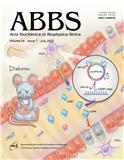
生物化学与生物物理学报(英文版)(Acta Biochimica et Biophysica Sinica) 知网目次万方目次
- CSCD
- 科核
- 主管单位:
中国科学院
- 主办单位:
中国科学院分子细胞科学卓越创新中心(生物化学与细胞生物学研究所)
- 国际刊号:
1672-9145;EISSN1745-7270
- 国内刊号:
31-1940/Q
- 学科分类:
- 字数:
10000-20000
- 有无基金:
/有基金 100.0%
- 周期:
CN外文-月刊
- 特殊属性:
第一批认定学术期刊
- 电话:
021-54920956/54920955/54920954/54922862
- 邮箱:
abbs@sibs.ac.cn(官网邮箱)
- 复合因子:
1.201
- 综合因子:
0.775
- 收录:
知网目次,万方目次
- 级别:
CSCD,科核
期刊简介
《生物化学与生物物理学报》期刊已被查看: 次
更新频次
低频栏目:
2007年06期文章-20.0%-期平均发文量10篇
2007年05期文章-20.0%-期平均发文量10篇
2007年04期文章-20.0%-期平均发文量10篇
2007年03期文章-20.0%-期平均发文量10篇
2007年02期文章-20.0%-期平均发文量10篇
单位占比
其他-100.0%一作占比
/有基金-100.0%投稿指南
1、投稿方式:在线投稿。
2、刊内网址:http://www.abbs.org.cn/
https://www.sciengine.com/abbs/
3、投稿系统:https://mc.manuscriptcentral.com/abbs
4、主办单位官网:
http://cemcs.cas.cn/xhqk/qk/actabiochimicaetbiophysicasinica/
(中国科学院分子细胞科学卓越创新中心(生物化学与细胞生物学研究所))
5、出刊日期:月刊,每月出版1期。
2022年9月5日星期一
《生物化学与生物物理学报(英文版)》投稿须知
Acta Biochimica et Biophysica Sinica
Instructions to Authors
【官网信息】
Instructions to Authors
ABBS
is a scientific journal publishing monthly original articles, short
communications and review articles in Biochemistry, Molecular Biology
and Biophysics. Original articles and short communications should report
original work not published or considered for publication elsewhere.
Reviews should provide a concise introduction to the subject matter to
inform the readers of the latest developments in a certain area. ABBS
also publishes brief reports, such as “new phenomenon” which reports a
new finding, and “lab note” which reports an important preliminary
result or a novel useful method. In addition, ABBS publishes “research
highlight” which provides brief comments on a most recently published
work and discusses its impact on the future research.
Editorial Review and Acceptance
The
acceptance criteria for a manuscript are the quality and originality of
the research and its significance to our readership. Except where
otherwise stated, manuscripts are single-blind peer reviewed by at least
two anonymous reviewers and the editor. Final acceptance or rejection
rests with the Editorial Board, who reserves the right to refuse any
material for publication. To verify originality, your article may be
checked by the originality detection service Crossref Similarity Check.
Submission of Manuscripts
Manuscripts
should be written in readable English and must be submitted online
through our ScholarOne Manuscripts System. Once you have prepared your
manuscript according to the instructions please visit the online
submission website.
Initial
submission should include a cover letter (filling in the cover letter
section) stating that: (i) the content has not been published or
submitted for publication elsewhere, (ii) all authors are in agreement
with the content of the manuscript, and (iii) a brief CV of the
corresponding author. Authors must declare any financial support or
relationships that may pose conflict of interest. If tables or figures
have been reproduced from other sources, a letter from the copyright
holder (usually the Publisher) stating authorization to reproduce the
material must be attached to the covering letter.
The
final version of the accepted manuscript will be uploaded by the
editorial office after pre-editing (careful check of the main text and
figure quality suitable for type-setting and production). If too many
language problems are to be fixed during pre-editing, authors will be
contacted by the editors for the final approval.
If
you have difficulties in using the online submission system, please
feel free to contact the Editorial Office at the following address:
Editorial Office of Acta Biochimica et Biophysica Sinica
CAS Center for Excellence in Molecular Cell Science
Institute of Biochemistry and Cell Biology
320 Yueyang Road, Shanghai 200031, China
Tel: +86-21-54920956/54920955/54920954/54922862
Fax: +86-21-54920954
E-mail: abbs@sibs.ac.cn
Abbreviations
Abbreviations
should be used sparingly: only where they ease the reader's task by
reducing repetition of long, technical terms. Initially use the word in
full, followed by the abbreviation in parentheses. Thereafter use the
abbreviation only.
Genetic
nomenclature Standard genetic nomenclature should be used. For further
information, including relevant websites, authors should refer to the
genetic nomenclature guide in Trends in Genetics (Elsevier Science,
1998).
Nucleotide
sequence data can be submitted in electronic form to any of the three
major collaborative databases: DDBJ, EMBL or GenBank. It is only
necessary to submit to one database as data are exchanged between DDBJ,
EMBL and GenBank on a daily basis. The suggested wording for referring
to accession-number information is: 'These sequence data have been
submitted to the DDBJ/EMBL/GenBank databases under accession number
U12345.' Addresses are as follows:
DNA Data Bank of Japan (DDBJ)
EMBL Nucleotide Sequence Submissions
GenBank
Format of Manuscript
For
the correct format for the main document of submitted manuscripts,
authors are suggested to refer to Examples on this website.
Original
Articles should be arranged in the following order: (i) title,
author(s) and affiliation(s); (ii) running title; (iii) abstract and
keywords; (iv) introduction; (v) materials and methods; (vi) results;
(vii) discussion; (viii) acknowledgements; (ix) funding; (x) references;
(xi) figure and table legends; (xii) tables; (xiii) figures. Short
Communications should be arranged in the following order: (i) title,
author(s) and affiliation (s); (ii) running title; (iii) abstract and
keywords; (iv) introduction; (v) materials and methods; (vi) results and
discussion; (vii) acknowledgements; (viii) funding; (ix) references;
(x) figure and table legends; (xi) tables; (xii) figures. Lab Note and
New Phenomenon should be arranged in the following order: (i) title,
author(s) and affiliation(s); (ii) running title; (iii) main contents;
(iv) acknowledgements; (v) funding; (vi) references; (vii) figure and
table legends. The locations of figures and tables in the text should be
indicated. Footnotes to the text are not allowed and any such material
should be incorporated into the text as parenthetical matter.
Title:
The title should be short and informative, less than 20 words, and
should not include non-standard acronyms or abbreviations.
Authors
and affiliations: (i) the full names of all authors; (ii) the addresses
of the institutions at which the work was carried out together with the
full postal address including post codes; (iii) the email address,
telephone and facsimile numbers of the author to whom correspondence
about the manuscript should be sent. The present address of any author,
if different from that where the work was carried out, can be supplied
as a footnote.
Running title: A running title should be provided and should be less than 60 characters.
Abstract:
The abstract should describe clearly the aim, major findings and
conclusions of the research. It must not exceed 250 words.
Keywords:
Five or fewer key words should be listed below the abstract in
alphabetical order. Keywords should be taken from those recommended by
the Index Medicus Medical Subject Headings (MeSH) browser list at
http://www.nlm.nih.gov/mesh/meshhome.html
Introduction:
The basic principles of research, background, earlier related work and
the purpose of the present studies should be described in the
introduction.
Materials
and Methods: Experimental procedures should be brief but complete
enough to be repeated; procedures published previously should be cited
in references. Source of materials, including Company name, City, and
Country should be given in bracket where they first appear.
Results: It is recommended that results be presented in figures and tables along with a suitable description in the text.
Discussion: The discussion should be concise (no more than three pages) and focus on the interpretation of the results.
References:
The Vancouver system of referencing should be used (examples are given
below). In the text, references should be marked using [Arabic numerals]
in the order in which they appear.
In
the reference list, if a reference has many authors, list only the
first seven authors, followed by 'et al'. Reference to unpublished data
and personal communications should not appear in the list but should be
cited in the text only (e.g. Smith A, 2000, unpublished data). All
citations mentioned in the text, tables or figures must be listed in the
reference list.
Names
of journals should be abbreviated according to the style used in Index
Medicus. Authors are responsible for the accuracy of the references.
Neufeld
EB, Remaley AT, Demosky SJ, Stonik JA, Cooney AM, Comly M, Dwyer NK, et
al. Cellular localization and trafficking of the human ABCA1
transporter. J Biol Chem 2001, 276: 27584-27590.
Hanahan
D, Jessee J, Bloom FR. Techniques for transformation of E. coli. In:
Glover DM, Hames BD eds. DNA Cloning: A Practical Approach. 2nd ed.
England: Oxford University Press 1998, 122-123.
Footnotes:
A footnote below the key words can only include the present address(es)
of any author(s) if different from that in the affiliation(s).
Tables:
Tables should be self-contained and complement, but not duplicate,
information contained in the text. Tables should be consecutively
numbered in the text in Arabic numerals. Legends should be concise but
comprehensive: the table, legend and footnotes must be understandable
without reference to the text. Vertical grid lines should not be used to
separate columns. Each column in a table must have a heading, with
units of measurement in parentheses; all abbreviations must be defined
in footnotes.
……
更多详情:
https://www.sciengine.com/ABBS/authorCenter?scroll=section_1
《生物化学与生物物理学报》同类本科学报期刊
-
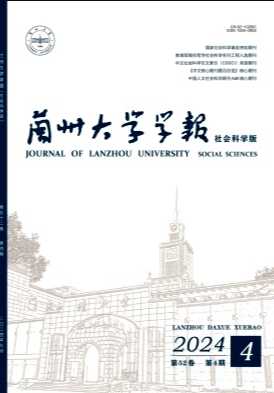
兰州大学学报(社会科学版)(不收版面费审稿费)
C刊,北核,科核,AMI核心,武A,国社科-合格
CN中文-双月刊影响因子1.987
-
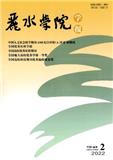
丽水学院学报
AMI入库,武B+,CACJ-扩展
CN中文-双月刊影响因子0.394
-
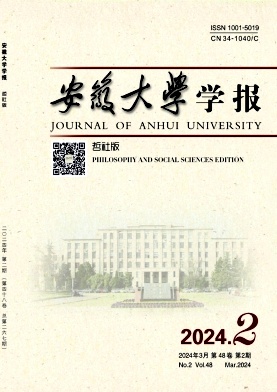
安徽大学学报(哲社版)(原:安徽大学学报(哲学社会科学版)(不收版面费审稿费)
C刊,北核,AMI核心,武A
CN中文-双月刊影响因子2.657
-
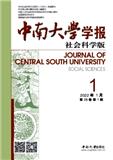
中南大学学报(社会科学版)
C刊,北核,AMI核心,武A
CN中文-双月刊影响因子2.158
-
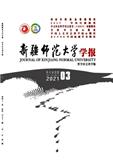
新疆师范大学学报(哲学社会科学版)(不收版面费审稿费)
C刊,北核,科核,武A+,AMI核心,国社科-优秀
CN中文-双月刊影响因子7.994
-
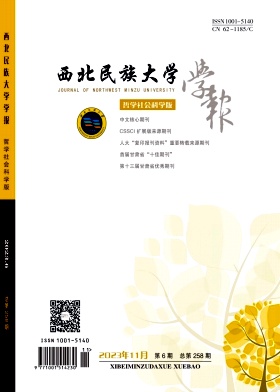
西北民族大学学报(哲学社会科学版)(不收版面费审稿费)
北核,C扩,武A,AMI扩
CN中文-双月刊影响因子1.65
-
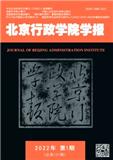
北京行政学院学报(不收版面费审稿费)
C刊,北核,科核,AMI核心,武A
CN中文-双月刊影响因子2.742
-
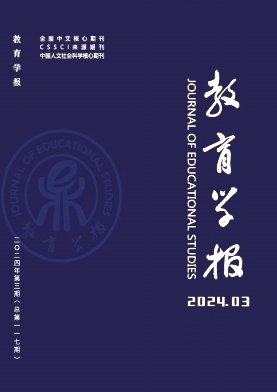
教育学报(原:学科教育)(不收审稿费版面费)
C刊,北核,科核,AMI核心,武A
CN中文-双月刊影响因子2.472
常见问题
-
生物化学与生物物理学报杂志社官网、联系方式是什么?
生物化学与生物物理学报杂志社官网:http://www.abbs.org.cn/
投稿网址:https://mc.manuscriptcentral.com/abbs联系电话:021-54920956/54920955/54920954/54922862
投稿邮箱:abbs@sibs.ac.cn(官网邮箱) -
生物化学与生物物理学报杂志是核心期刊么?
生物化学与生物物理学报是核心期刊,级别是:CSCD,科核, 是:本科学报分类下的知网目次,万方目次收录的期刊。
-
请问你们是生物化学与生物物理学报杂志社吗?
我们不是《生物化学与生物物理学报》杂志社。本站主要从事期刊信息展示与期刊推荐,不是任何杂志官网,直投稿件请联系杂志社。本站仅提供免费的学术指导、论文辅导、期刊投稿信息整理收集服务。
-
你们指导服务后可以保证文章被发表吗?
期刊发表的成功与否,主要取决于文章内容的质量。编辑老师会根据研究领域、创新性等多因素进行考量。我们会帮助您理解期刊的发表要求,助力提升发表几率,从而增加发表的机会。
-
晋级论文能否在报纸上发表?
在学术界,论文的发表往往被视为研究者职业发展的重要一环。晋级论文,即为了获得更高职称或学术地位而撰写的学术论文,通常需在专业期刊上发表。然而,许多人可能会问
